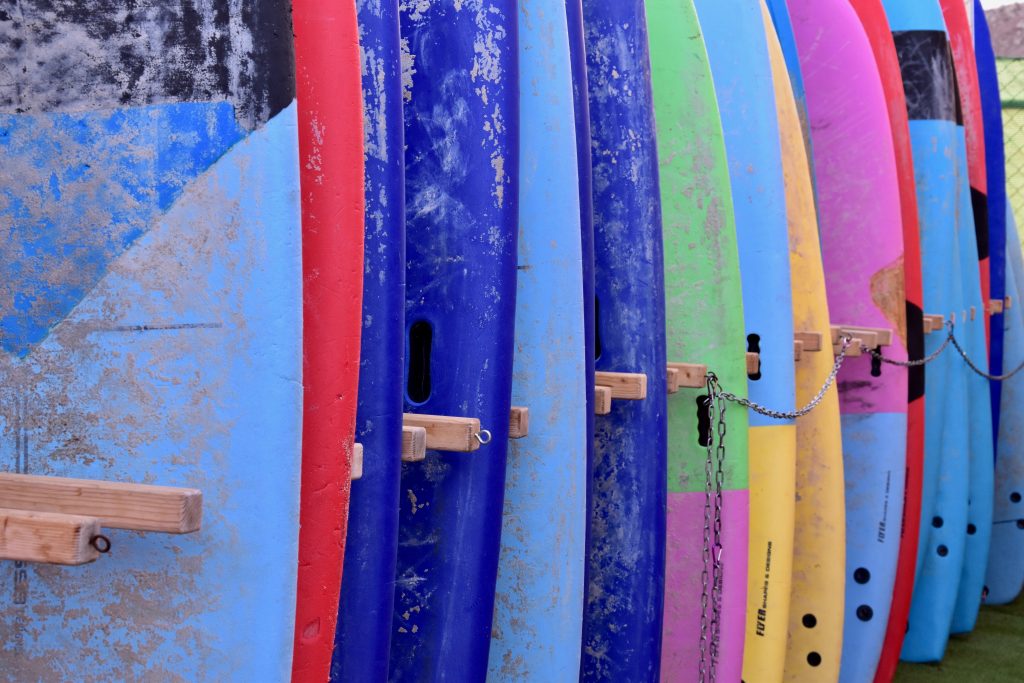Join our waitlist
Are you?


A lot of surfers are on boards that are too small. To be more precise: They are surfing boards with not enough volume for their skill level which results in fewer waves being caught and surfed. So ultimately it means, surfing a board that is too small is frustrating. Here are 3 reasons why people are surfing boards that are too small and how to solve it.
I fell in that trap once again. Interestingly, most surfers who start out have at some point the epiphany moment of getting a smaller board so they are able to duck dive. The main argument is often that it is easier to handle a smaller board when sitting on the inside and getting washed by a bigger set: "I can't hold on to the big board when doing a turtle roll and don't want to hurt anyone." However, this is a big misconception and probably an even bigger cause of frustration amongst learners.
"The ultimate goal of surfing is surfing waves. Not diving under them."
Surfing a smaller board that is possible to duck dive is moving you away from your ultimate goal of surfing waves. And it doesn’t add any value in other areas when you are still struggling to catch waves.
The duck dives helps in 2 situations. You can avoid these by applying the strategies below, so you can still surf a bigger board to catch more waves easier.
One purpose of the duck dive is to help paddling out through the break when there is no channel/rip/set break.
However, when it comes to paddling out, you are better off adding some skills on how to observe and read the ocean (which is hugely important when looking at your future surfing career) and paddle out fast (a bigger board paddles way faster) in between set breaks or learn how to use a rip or channel to get in the lineup. Done. No need to duck dive. And if there is no set break, you probably shouldn’t be out there anyway but rather find a more protected spot.
The second purpose of the duck dive is to help managing the board when you are too far on the inside and a set is rolling in.
Try to avoid being in that position in the first place. To do that become more aware of reading the ocean and foreseeing incoming sets so you can paddle fast to the outside in time. In case you are still too deep: Do the turtle roll. Yes, it is more exhausting and you may not like it. But you want to surf waves. That is why you are in the water in the first place. Not having the correct turtle roll technique builds frustration. If the waves are still too powerful, you should consider surfing a more appropriate spot for your abilities.
A smaller board may look good when carried on the beach and your ego likes it, too. However, it will always be a truthful experience in the water. Can the surfer catch waves? Can the surfer handle and paddle the board?
Better surfers in the lineup can tell in the blink of an eye and sort you in one of the two boxes:
So which box do you choose to be in?
„But I want a board that I can easily carry“ is mostly something you hear from surfer girls (sorry girls). And I get it. Carrying a 9 ft log is no pleasure for nobody. Especially on a windy day. However, you put yourself out there to catch plenty of waves and to feel the stoke that makes you come back every time. Wouldn’t you want more of that in exchange for a free strength exercise on the beach? Also, surfing enough volume doesn’t mean having a massive longboard. You can get a fun shape that looks cool, is easy to carry and offers plenty of volume.
In case you find yourself falling into one of these traps, don't worry. It is part of a surfer's journey. And there is a way out. To find the right board volume there are two steps:



PRODUCTS